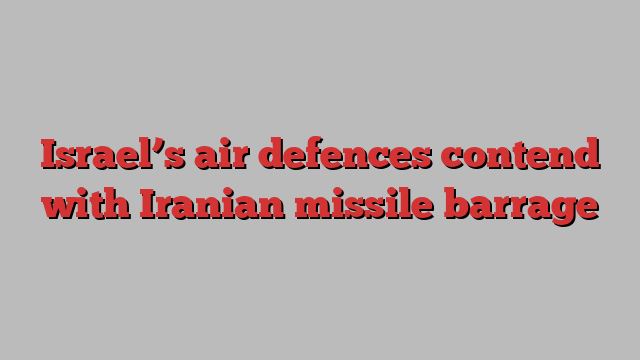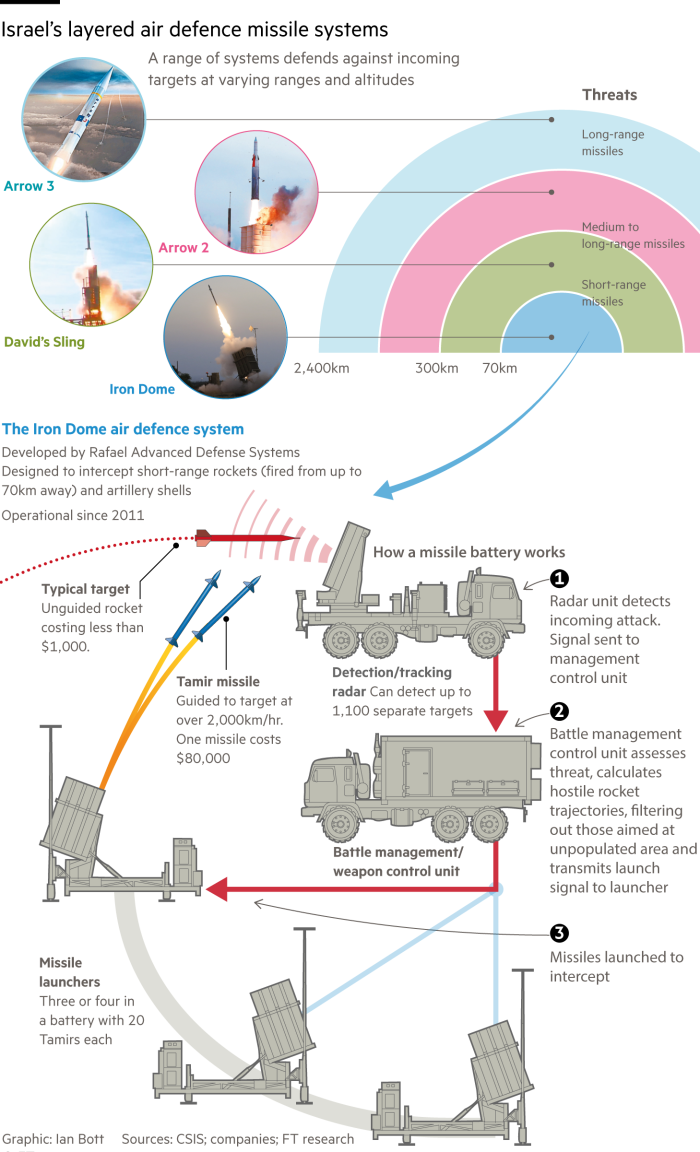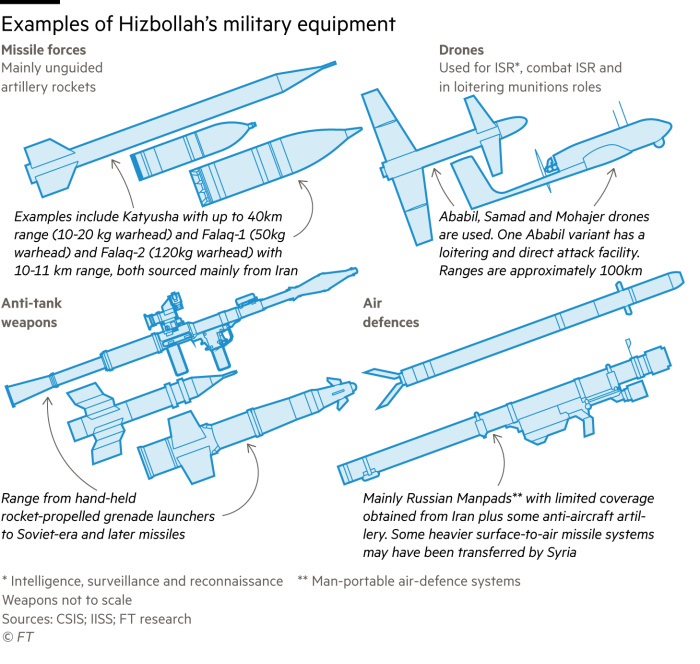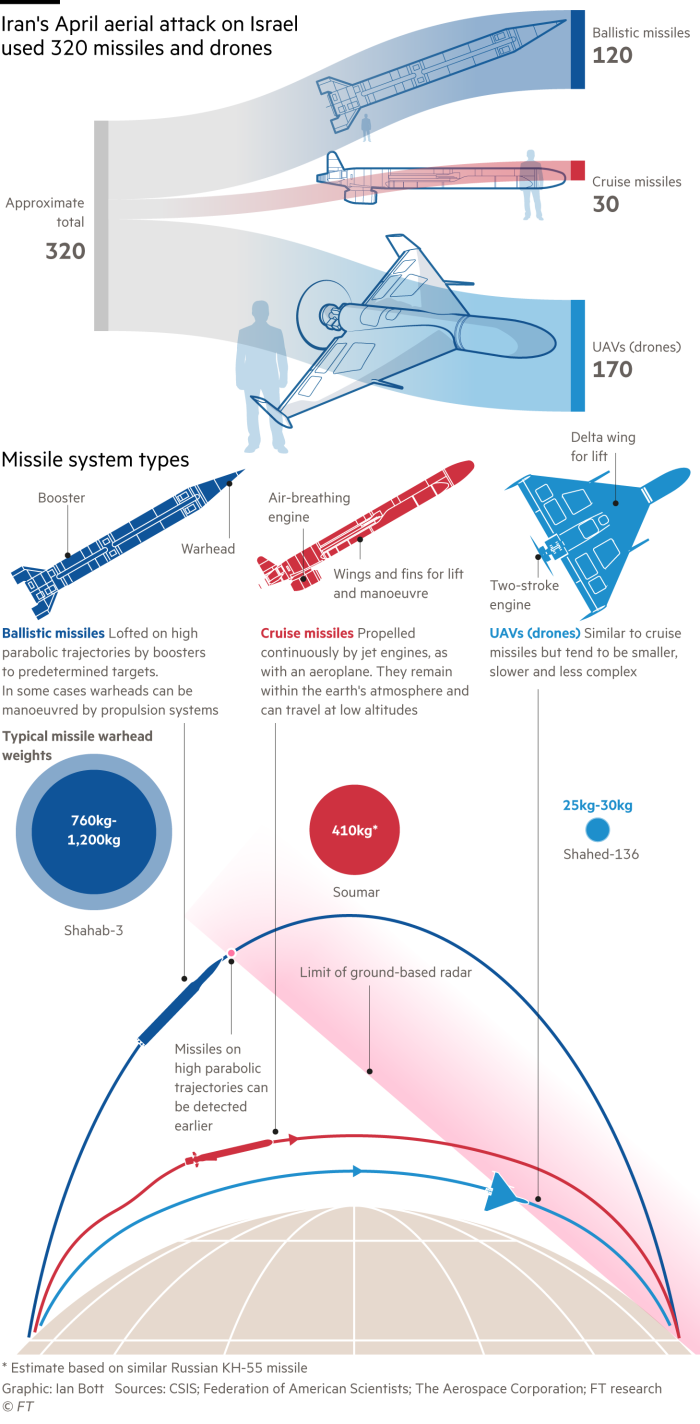
Israel deployed its air defences against a missile attack by Iran on Tuesday as air raid sirens sounded across the country.
At around 8pm local time, the Israeli military confirmed that Iran had fired missiles at Israel as it ordered residents to shelter in place and remain close to bomb shelters.
Iran last fired a salvo of ballistic missiles at Israel in April, in retaliation for an Israeli strike on the Iranian consulate in Syria’s capital, which killed a number of senior Iranian military commanders.
In that attack, Iran fired more than 300 missiles and drones, virtually all of which were intercepted before entering Israeli territory.
That was thanks to the combined efforts of the US and its allies, the tracking of the missiles’ flight paths by the US’s partners in the region, and Israel’s own, highly sophisticated air defences.
However, Tehran telegraphed the April attack long in advance. Although the US said this week that it is “well postured to defend US personnel, partners, and its allies”, it is unclear if Israel is as well prepared to shoot down a major barrage this time.
That would put Israel’s own multi-layered air defence system under its toughest test so far, with success depending in part on the kind of airborne assault that Iran — perhaps in conjunction with Hizbollah and other regional militias — may have planned.
Analysts have said that a mass combined attack, in a single barrage, could overwhelm parts of Israel’s air defences. Even in April, Israeli military spokesperson Daniel Hagari cautioned that Israel’s air defences were “not hermetic”.
There have also been several recent occasions when Hizbollah and Houthi rockets and drones have penetrated Israel’s air defences.

The centrepiece of Israel’s air defence is the Iron Dome. Funded and developed jointly with the US military, it was introduced in 2011 and has since intercepted thousands of short-range artillery rockets fired by Hamas and other Gaza-based Palestinian militant groups.
During the 2021 Gaza conflict, the Israel Defense Forces claimed a 90 per cent interception rate for projectiles fired at populated areas of the country by Hamas and other militants.
Analysts say its high success rate is largely due to the platform’s sophisticated radar, which is augmented with additional artificial intelligence capabilities.
These enable it to discern in seconds which incoming rockets, within a roughly 70km range, are likely to land harmlessly on open ground and which could harm civilians or troops.
This also allows the IDF to conserve the finite supply of its more sophisticated Tamar interceptors, which cost tens of thousands of dollars per missile.
A sea-based version of Iron Dome, often referred to as C-Dome, is also deployed on Israeli navy corvettes. It has successfully shot down attack drones fired at Israeli assets in the Red Sea by the Iran-backed Houthi militants and at Mediterranean gas rigs fired by Hizbollah.
In comparison, however, Hizbollah possesses a much bigger and more sophisticated arsenal than either Hamas or the Houthis, with 150,000 rockets and missiles, including long-range and precision-guided capabilities and attack drones, as well as anti-tank and anti-aircraft missiles. Much of this has been provided by Tehran, experts say.
Larger and more sophisticated still are Iran’s capabilities, which constitute the Middle East’s “largest and most diverse missile arsenal”, according to the CSIS think-tank, and is made up of thousands of missiles, some capable of reaching as far as south-east Europe.

To counter these threats, Israel developed a second layer of defence known as David’s Sling, whose remit is to shoot down heavier rockets and tactical ballistic missiles, such as Scuds, in the range of 100km to 300km.
The system, which went online in 2017, has only seen real action over the past year. Its Stunner interceptor missiles struck several projectiles fired from Gaza and also reportedly intercepted a Hizbollah missile that was fired last week at Tel Aviv.
Israel’s third layer of air defence, Arrow 2 and 3, is intended to defend Israel from long-range ballistic missiles, intercepting incoming projectiles outside the Earth’s atmosphere, often high above and far away from Israeli airspace.
Arrow was first used operationally during the current war, when it successfully shot down incoming ballistic missiles from the Houthis. It also helped block Iran’s April attack, which included more than 100 ballistic missiles.
“The logic of the system is that one layer backs up the other,” Yaakov Lappin, an Israeli military affairs analyst, said.

While analysts say the system has performed well overall, Israel has still needed help during the current conflict.
During the April attack, Israel was aided by international partners including the US, UK and France, as well as Middle East allies that have not been named publicly. Two US aircraft carriers and two destroyers were involved in intercepting the barrage, while jets from the Royal Air Force were also scrambled.
On Tuesday, the US warned of “severe consequences” should Iran launch a ballistic missile against Israel.